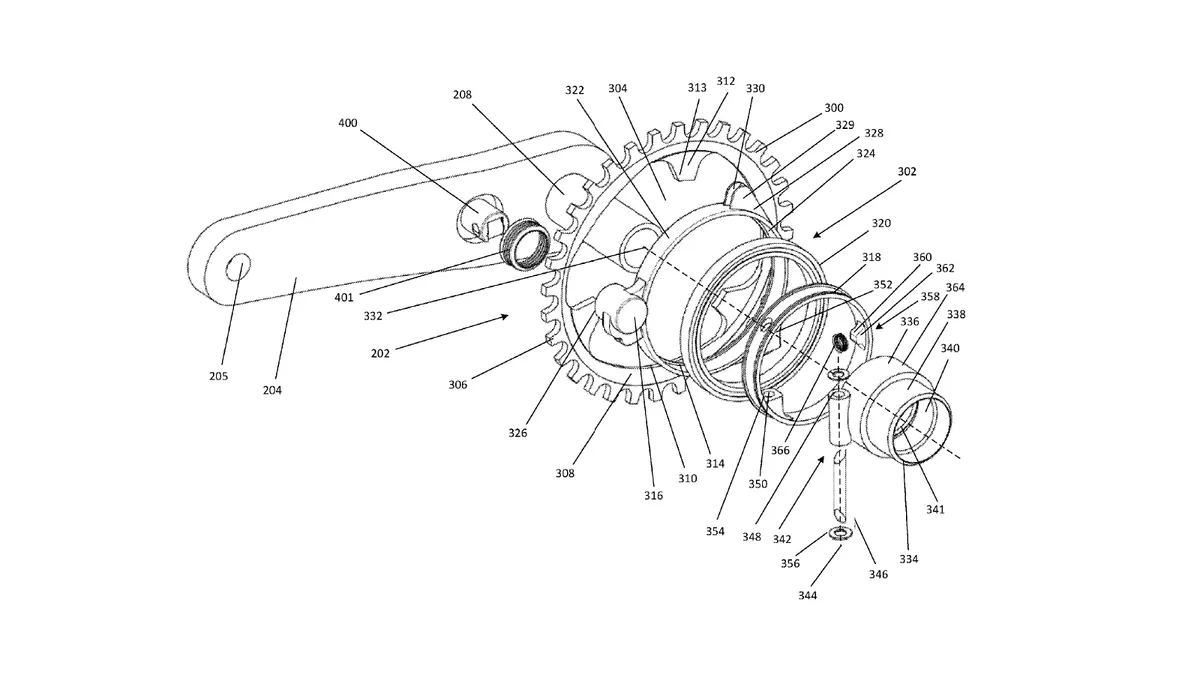SRAM, arguably the king of 1x, has a new patent filing aimed at further refining one of the major problems 1x-drivetrains face.
The issue with wide-range cassettes and a single chainring is the potential for poor chain lines at each extreme end of the gear range. That can lead to reduced efficiency and increased wear and load on your chain, chainrings and cassette.
We previously reported on patents from SRAM and Shimano that feature a split chainring and a sliding chainring mechanism respectively, which tries to address this.
However, we’ve come across this new patent from SRAM that touts a pivoting chainring as an alternative solution to the problem.
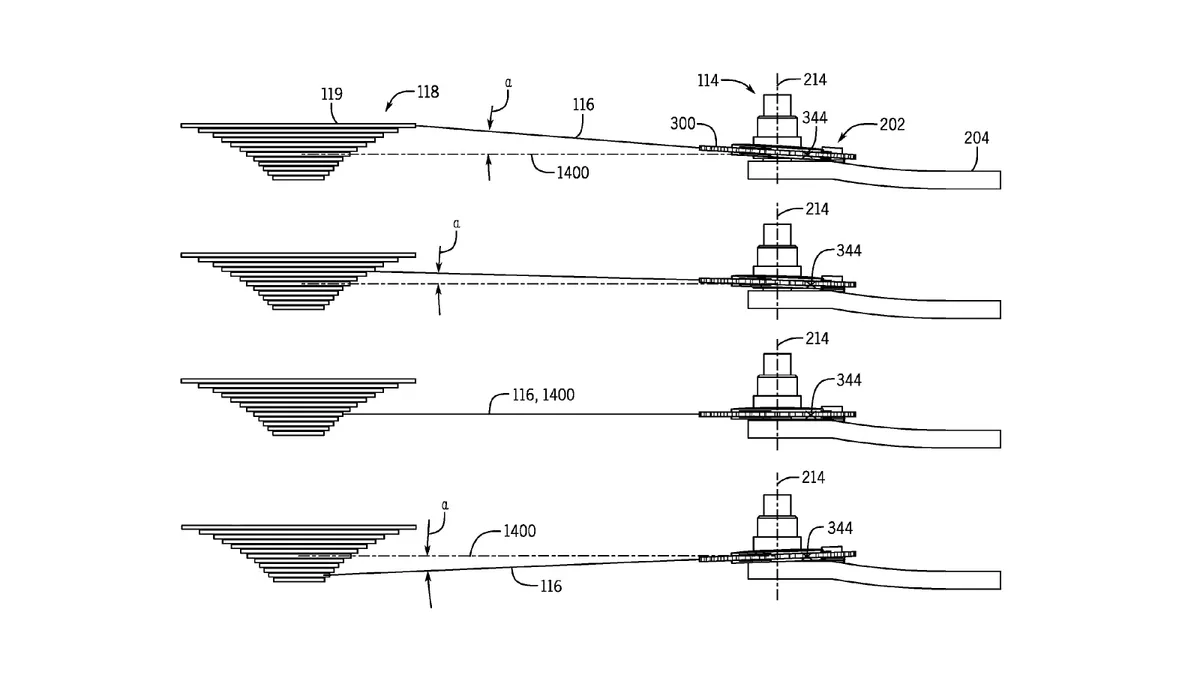
An assembly places the pivot ahead of the bottom bracket. The effect of this offset, which SRAM has dubbed trail, is to prevent a pivoting chainring from wobbling during pedalling.
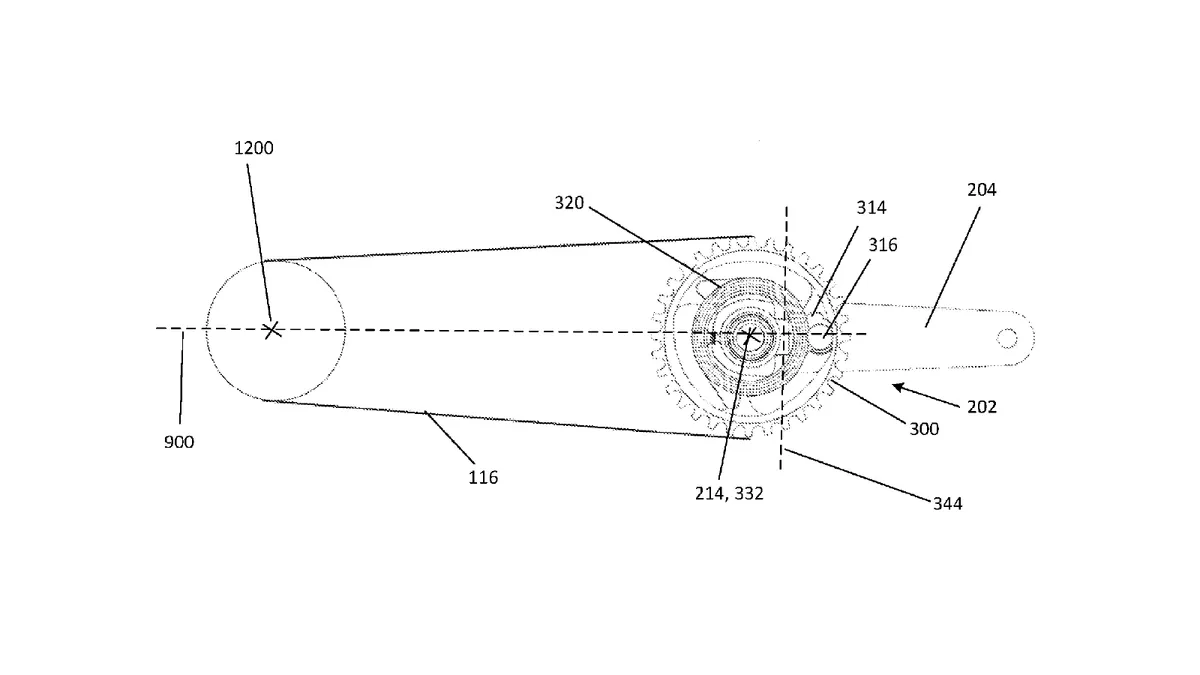
In some examples, SRAM also suggests a “rotation resistance device” to act “as a damper in reducing wobble about the chainring.” This can act in various ways: one example suggests that the chainring can pivot in steps, slotting into detents (362) as it pivots more or less, in turn providing more stability in each position.
In order to achieve this, SRAM has had to come up with what we feel is quite a complicated mechanism to allow simultaneous pivoting and pedalling.
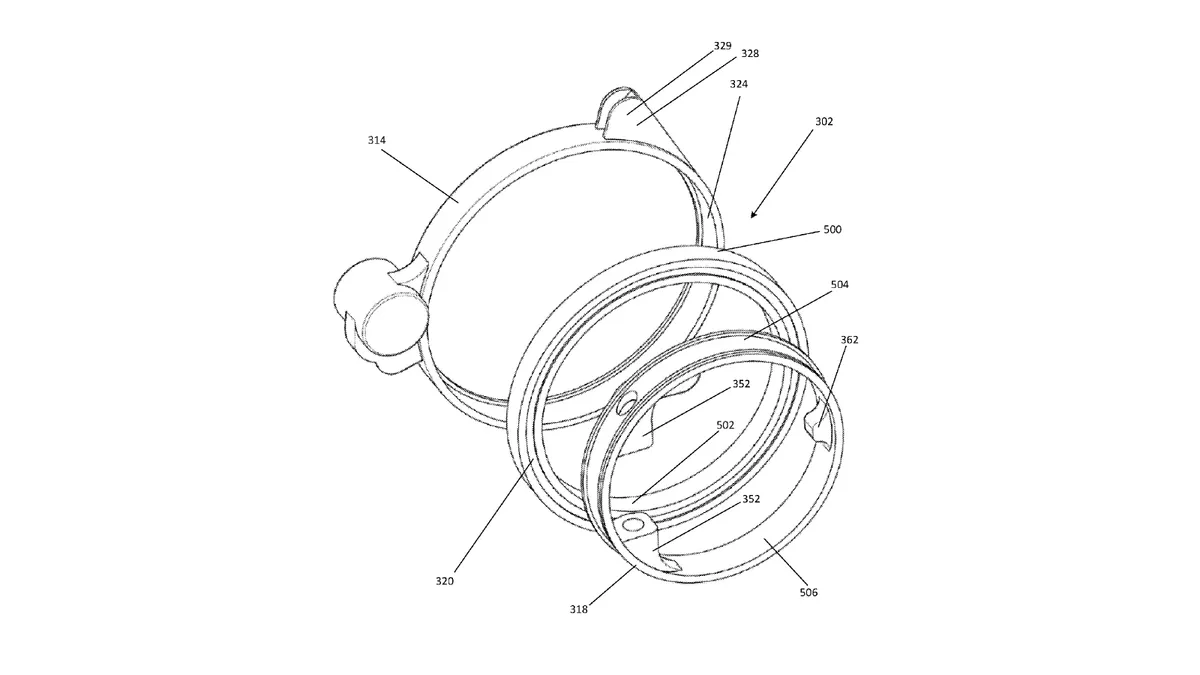
The pivot (352) is effectively attached to the bottom bracket shell, keeping it in the same orientation. The chainring must rotate around this fixed pivot.
The chainring sits on a carrier (314) that rotates on a bearing (320) around the pivot assembly. Torque is transmitted to the chainring with a drive pin (400) that protrudes from the crank arm.
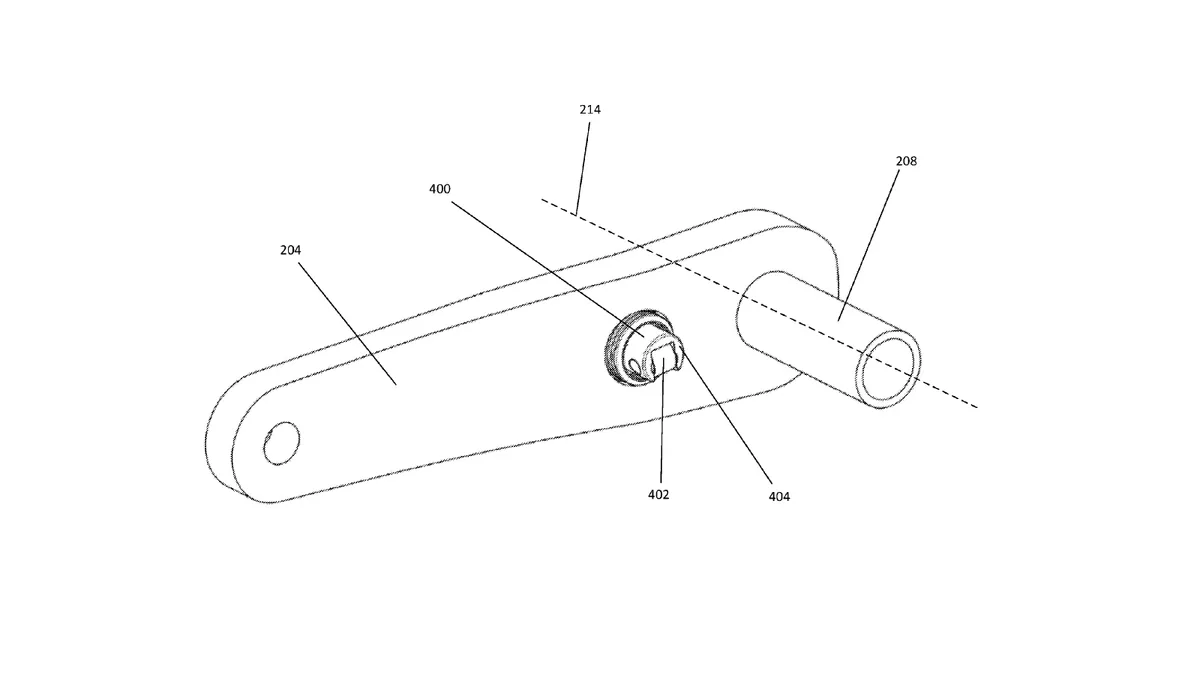
This allows the chainring to pivot independently of the pedalling action.
It's clear that SRAM is putting a lot of time and effort into addressing the chainline issues that surround current 1x drivetrains, whether or not we'll ever see a design like this make production is still anyone's guess.
